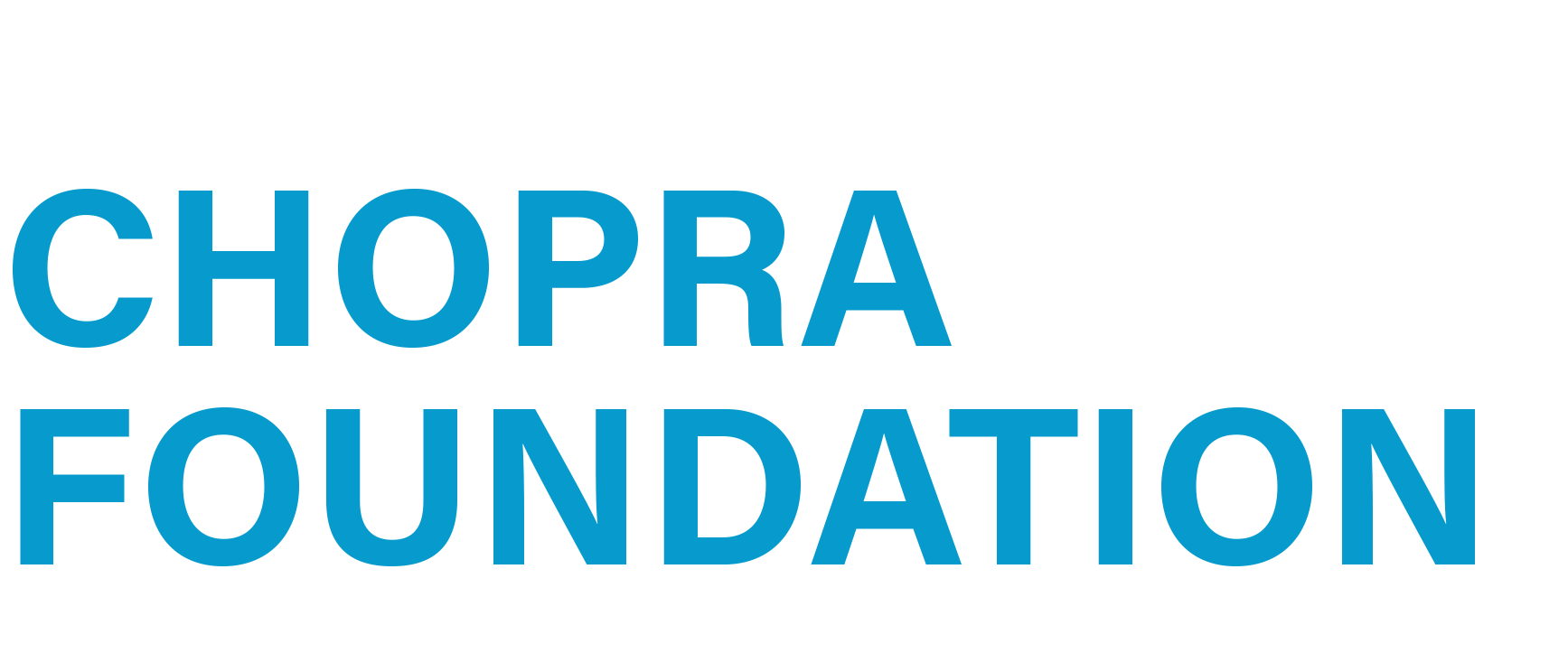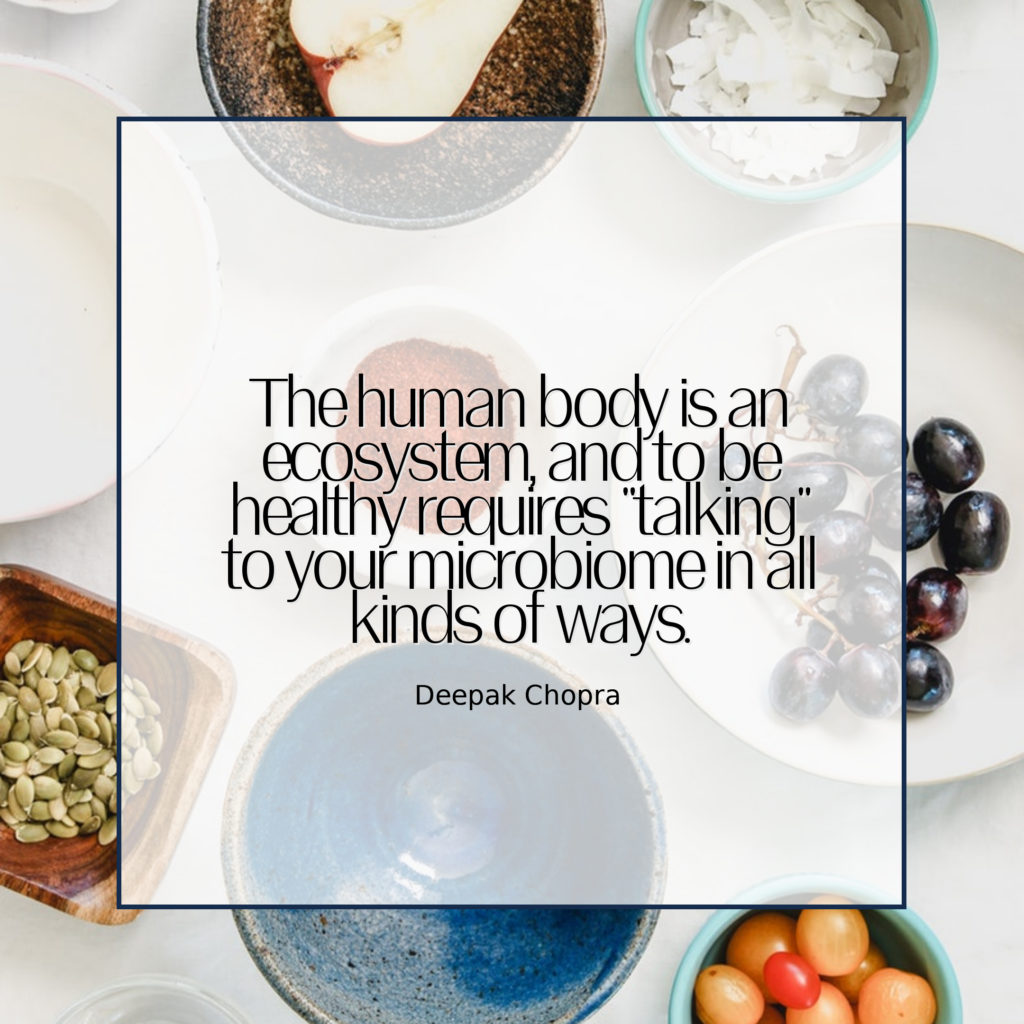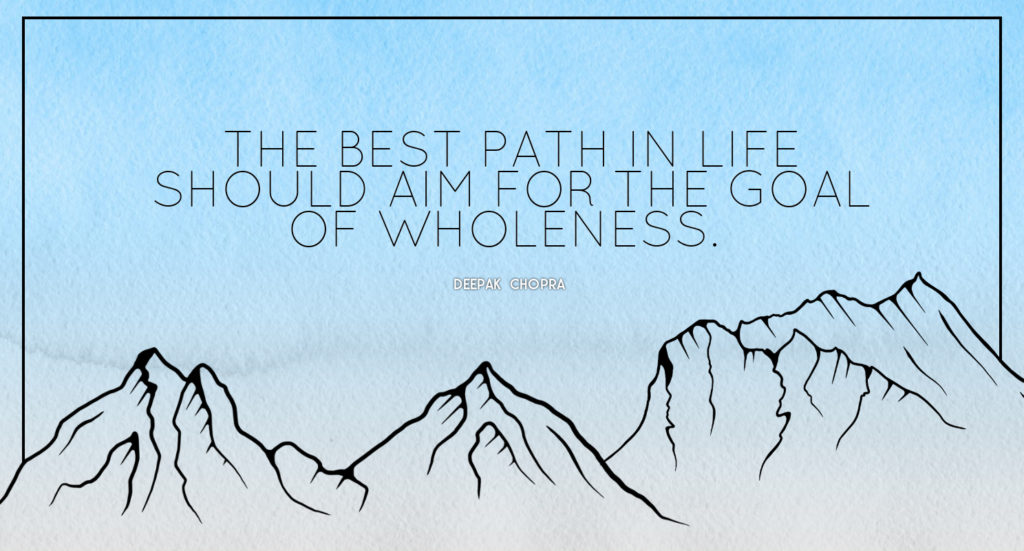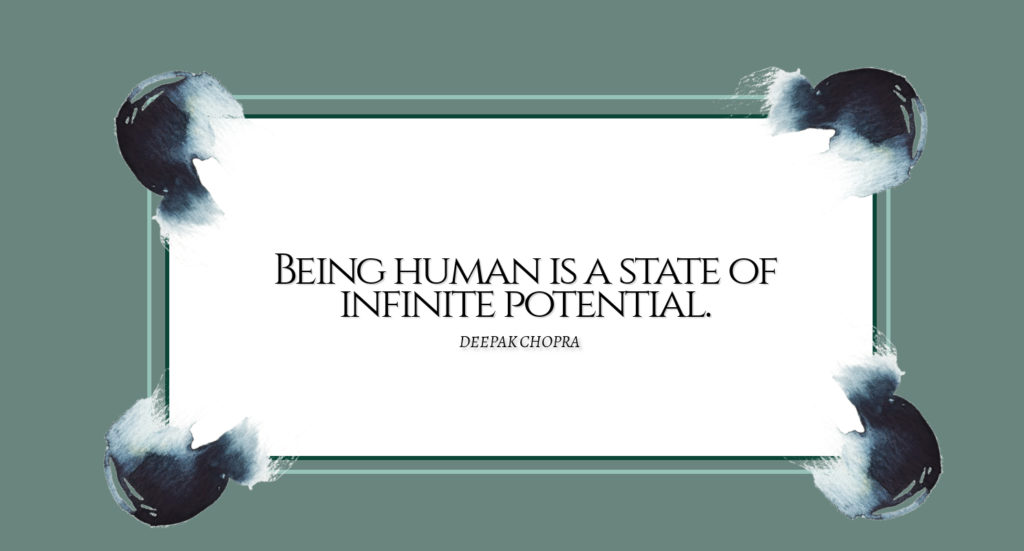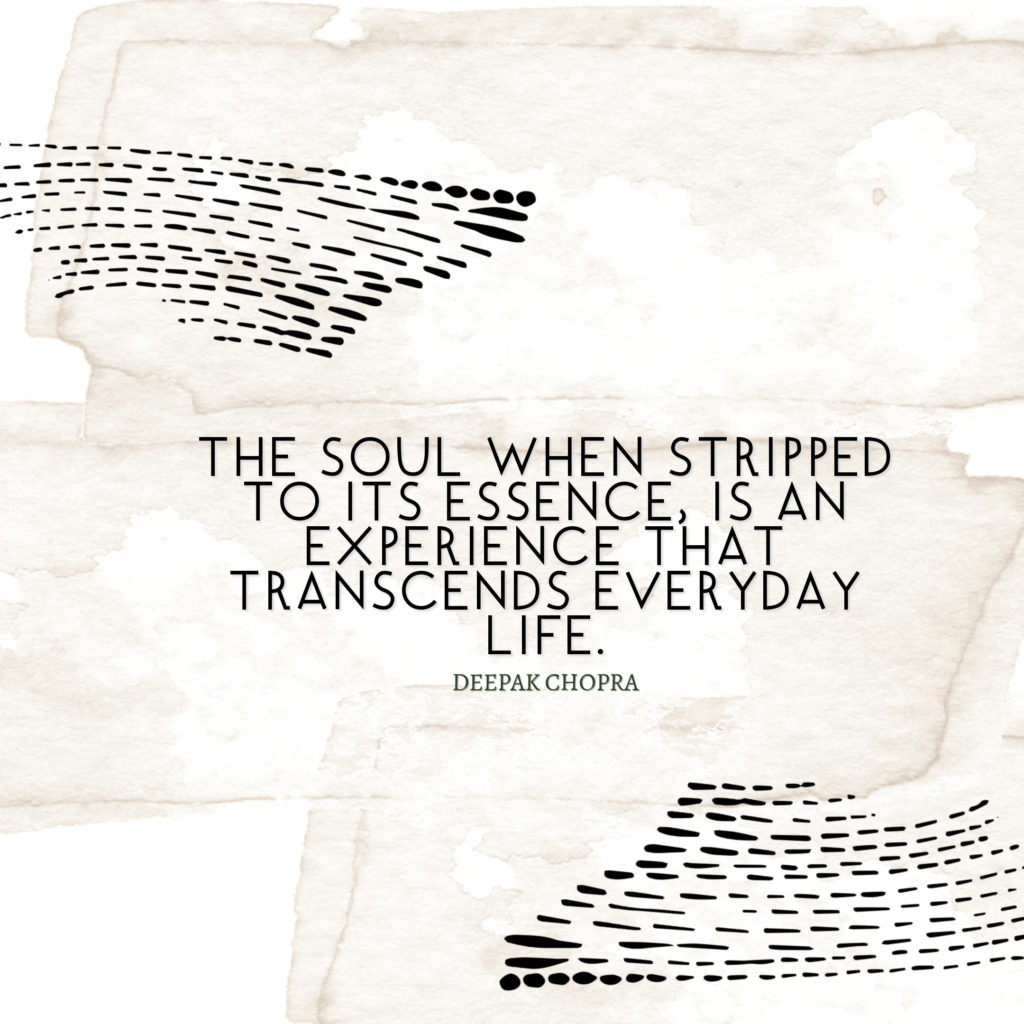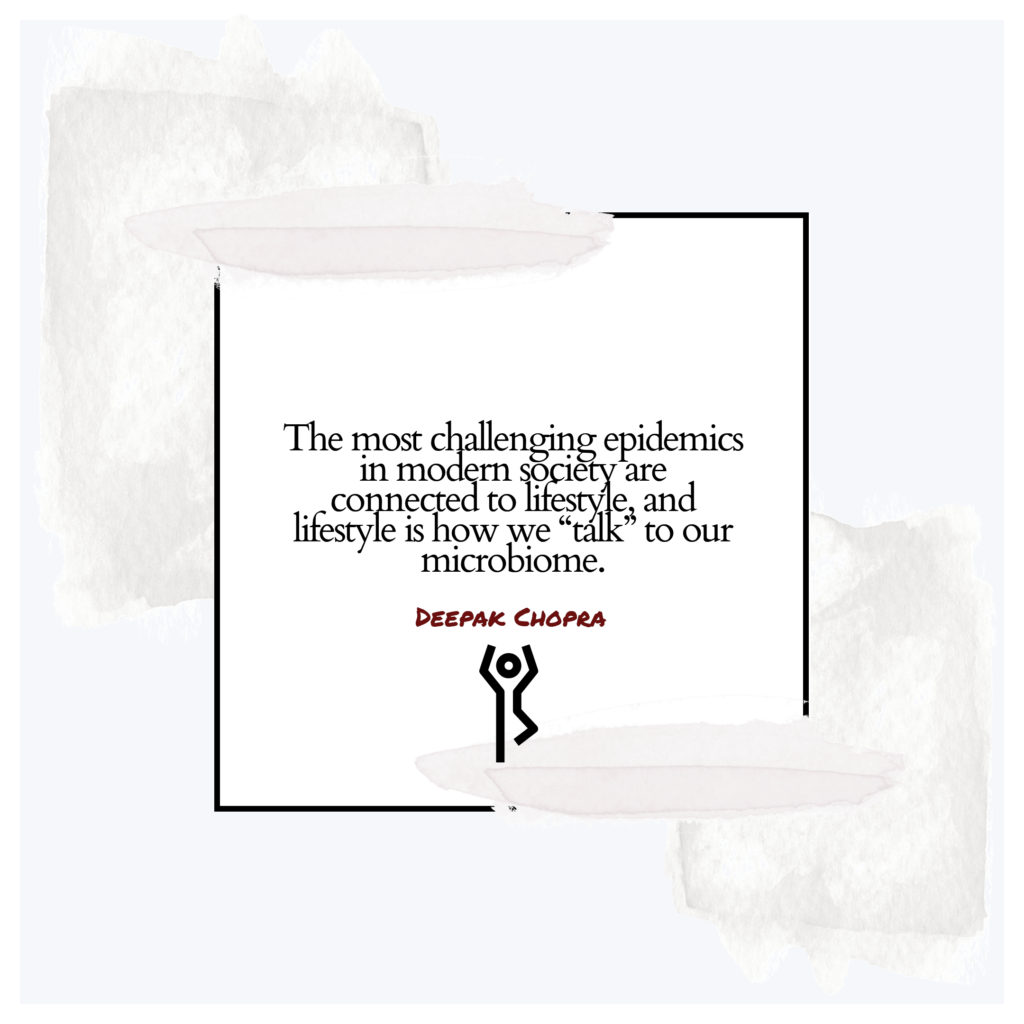
By Deepak Chopra, MD and Naveen Jain
The term “microbiome” has become popular in the last decade, and most people now realize that their bodies are populated by an enormous quantity of microbes. Taking every location from the skin to the mouth to the intestinal tract into consideration, the microbiome weighs around 3 lbs., roughly the same as the human brain.
The radical importance of keeping your microbiome balanced and healthy is just beginning to dawn on medical science and biology. If you took a snapshot of a tiny portion of your digestive tract, it would be teeming with an array of life forms almost beyond comprehension (including bacteria, viruses, bacteriophages, archaea, fungi, yeast, etc. Since it has long been known that we can’t digest food without the aid of the so-called “flora” in our intestines, the microbiome didn’t spring out of nowhere. What wasn’t realized until recently, however, is its staggering extent.
A human being possesses roughly 23,000 to 25,000 genes, and there is enough capacity for juggling DNA into new combination that these genes create 7 billion unique individuals on Earth, with no end in sight for creating billions more unique people. Your trillions of cells, however, are estimated to be outnumbered around 3 to 1 by the collected microbiota (as the collective microbial colonies are called) that co-exist with us. In terms of genes, however, it is estimated that all of these small creatures and plants contribute 2 million genes to our existence.
Now we realize that the human body is an ecosystem, and to be healthy requires “talking” to your microbiome in all kinds of ways—you have a whole planet to manage at the microbial level. The digestive functions they perform is barely the tip of the iceberg. As intestinal microbes feed, they excrete chemicals that are essential to wellness. Besides producing well-known chemicals like vitamin B, the microbiome sends neurotransmitters like serotonin and dopamine into the bloodstream. Hormonal levels are influenced, and so is your immunity from disease.
What we are realizing is that none of the microbial life inside us is a free rider. Those 2 million genes evolved with us. Some are actually woven into our own DNA. As in the Earth’s ecosystem, survival demands that every microbe performs a useful function. But where there is balance the possibility for imbalance occurs. When this happens, the body and the microbiome are off kilter, with the result that disease processes may start to form, and natural functions like staying at a proper healthy weight are impaired—or even become impossible.
The cutting edge of microbiome research involves mapping out thousands of microbes and identifying their functions—an overwhelming task now made possible by high-speed computers and data analysis. But even at this early stage, we can jump to some practical conclusions.
Companies are beginning to offer a service that analyzes your personal microbiome. With a small stool sample, it is possible to profile your unique digestive process, which foods you metabolize well or not so well, which chemicals (known as metabolites) your microbiome is secreting in terms of harmful and helpful ones—and this is just the beginning.
The most challenging epidemics in modern society are connected to lifestyle, and lifestyle is how we “talk” to our microbiome. The next bite of food you eat sends a message to your microbiome, and in reply it will send a chemical message back. Unhealthy chemical responses that originate in the microbiome are thought to be strongly linked to heart disease and overweight, for example. No two people are chemically alike at any given moment. The body is like an information superhighway, and although traditionally the brain was the hub for all incoming and outgoing information, the true hub is the gene. Therefore, with its huge preponderance of genes, the microbiome is thought now to dominate the information superhighway.
Pursuing gene therapies for the past fifteen years, ever since the Human Genome Project provided a complete map of human DNA, has proved frustrating and enormously expensive. But influencing your ecosystem of genes happens naturally every day. The information superhighway is populated by the messages sent from gene to gene, and these come from thoughts, emotions, stress levels, relationships, and the quality of food, air, and water you ingest.
The future of wellness is at stake here. By attending to the ecosystem that is you, the entire system of mind and body is affected. For the first time, in practical terms relating to eating, being active, sleeping, and managing stress and inflammation, the old model of preventing risks can be replaced by a positive model. The positive model is about optimizing the personal well-being of each person. If we learn from an early age how to “talk” to our microbiome, that conversation turns into feedback loops that maintain balance and wholeness everywhere.
Deepak Chopra MD, FACP, founder of The Chopra Foundation and co-founder of The Chopra Center for Wellbeing, is a world-renowned pioneer in integrative medicine and personal transformation, and is Board Certified in Internal Medicine, Endocrinology and Metabolism. He is a Fellow of the American College of Physicians and a member of the American Association of Clinical Endocrinologists. Chopra is the author of more than 85 books translated into over 43 languages, including numerous New York Times bestsellers. His latest books are The Healing Self co-authored with Rudy Tanzi, Ph.D. and Quantum Healing (Revised and Updated): Exploring the Frontiers of Mind/Body Medicine. www.deepakchopra.com
Naveen Jain is an entrepreneur driven to solve the world’s biggest challenges through innovation. He is the founder of several successful companies including Moon Express, Viome, Bluedot, TalentWise, Intelius and InfoSpace. Moon Express is the only company to have permission from the US government to leave earth orbit and land on the moon. Viome is focused on disrupting healthcare with the goal of “making illness elective” by identifying biomarkers that are predictive of chronic diseases and preventing them through personalized diet & nutrition. Naveen is a director of the board at the X PRIZE Foundation and Singularity University. Naveen Jain has been awarded many honors including “Ernst & Young Entrepreneur of the Year”, “Albert Einstein Technology Medal” for pioneers in technology, Recipient of “Ellis Island Medal of Honor”, Most creative person” by Fast Company, “Top 50 philanthropists of 2018” by Town & Country magazine and “Humanitarian Innovation Award” at the United Nations
